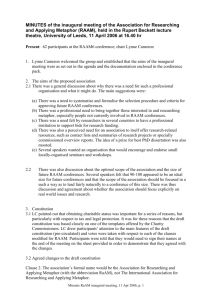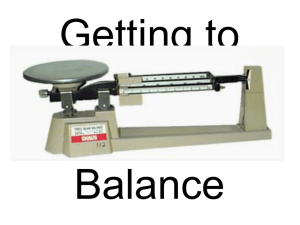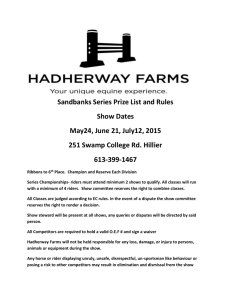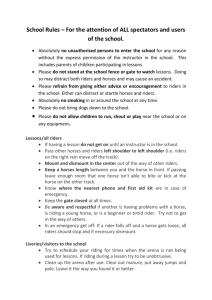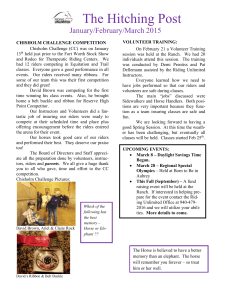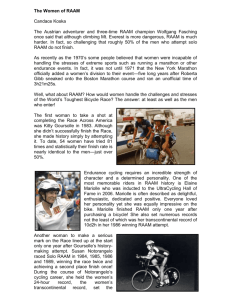From the Field: What RAAM Riders Really Eat
advertisement
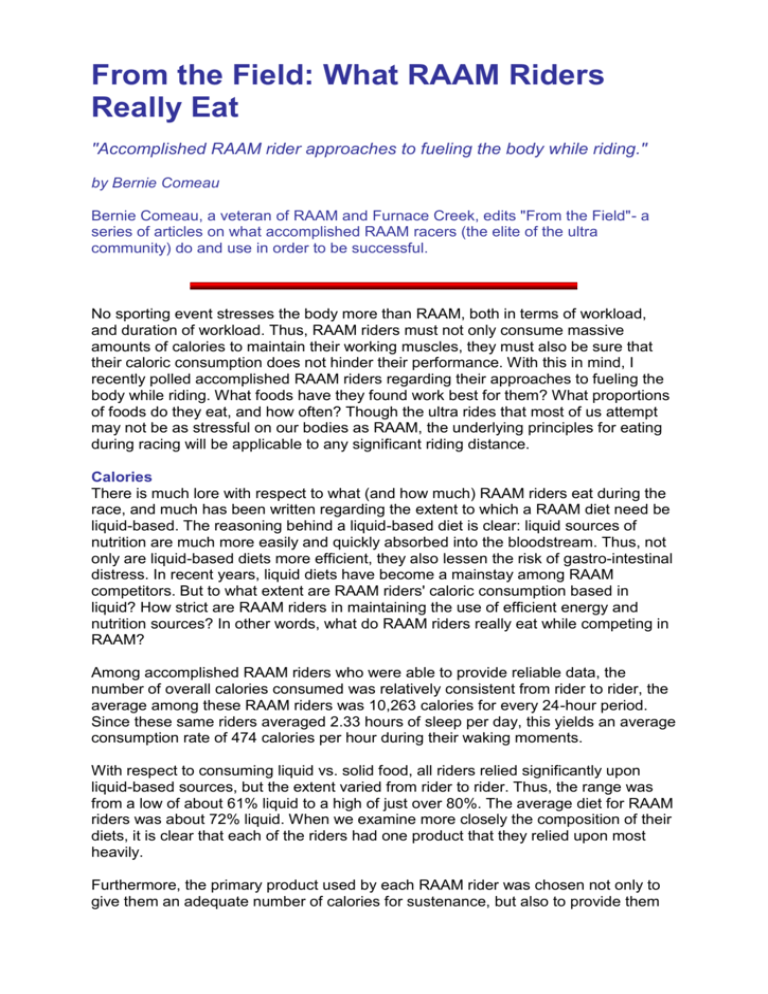
From the Field: What RAAM Riders Really Eat "Accomplished RAAM rider approaches to fueling the body while riding." by Bernie Comeau Bernie Comeau, a veteran of RAAM and Furnace Creek, edits "From the Field"- a series of articles on what accomplished RAAM racers (the elite of the ultra community) do and use in order to be successful. No sporting event stresses the body more than RAAM, both in terms of workload, and duration of workload. Thus, RAAM riders must not only consume massive amounts of calories to maintain their working muscles, they must also be sure that their caloric consumption does not hinder their performance. With this in mind, I recently polled accomplished RAAM riders regarding their approaches to fueling the body while riding. What foods have they found work best for them? What proportions of foods do they eat, and how often? Though the ultra rides that most of us attempt may not be as stressful on our bodies as RAAM, the underlying principles for eating during racing will be applicable to any significant riding distance. Calories There is much lore with respect to what (and how much) RAAM riders eat during the race, and much has been written regarding the extent to which a RAAM diet need be liquid-based. The reasoning behind a liquid-based diet is clear: liquid sources of nutrition are much more easily and quickly absorbed into the bloodstream. Thus, not only are liquid-based diets more efficient, they also lessen the risk of gastro-intestinal distress. In recent years, liquid diets have become a mainstay among RAAM competitors. But to what extent are RAAM riders' caloric consumption based in liquid? How strict are RAAM riders in maintaining the use of efficient energy and nutrition sources? In other words, what do RAAM riders really eat while competing in RAAM? Among accomplished RAAM riders who were able to provide reliable data, the number of overall calories consumed was relatively consistent from rider to rider, the average among these RAAM riders was 10,263 calories for every 24-hour period. Since these same riders averaged 2.33 hours of sleep per day, this yields an average consumption rate of 474 calories per hour during their waking moments. With respect to consuming liquid vs. solid food, all riders relied significantly upon liquid-based sources, but the extent varied from rider to rider. Thus, the range was from a low of about 61% liquid to a high of just over 80%. The average diet for RAAM riders was about 72% liquid. When we examine more closely the composition of their diets, it is clear that each of the riders had one product that they relied upon most heavily. Furthermore, the primary product used by each RAAM rider was chosen not only to give them an adequate number of calories for sustenance, but also to provide them with the necessary proportions of fats, proteins, and carbohydrates, as well as some vital minerals, vitamins, and amino acids. In other words, the main source of calories for these riders was also their main source of overall nutrition. In particular, most riders aimed for the standard proportion of 70/20/10 with respect to carbohydrates, proteins, and fats. As one rider explained, "on long races such as RAAM, it's important to make sure that your body is getting enough fat (for fuel) and protein (to maintain muscle mass). Your main source of energy must properly balance all three components [carbohydrates, fats, and proteins]. Carbohydrate-only drinks just won't cut it here". ìmost riders aimed for the standard proportion of 70/20/10 with respect to carbohydrates, proteins, and fats.î Although numerous products were cited by riders as their main source of energy, two general groups of liquid-based diet emerged. Many accomplished RAAM riders relied on drinks which contained not only the full complement of carbohydrates, protein, and fat, but also provided almost all essential vitamins and minerals in their formulas. The most commonly used of these "meal replacement" products was Ensure. Other RAAM riders chose drinks, such as Sustained Energy or Revenge, which focused exclusively on providing the proper proportion of carbohydrates, protein, and fat (plus some vitamins and amino acids) to athletes. In other words, these were more straightforward "energy drinks". Whatever RAAM riders chose as their primary source of energy, they used it to supply an overwhelming proportion of their overall calories, though never all. Typically, this primary source accounted for 45% to 70% of overall caloric intake, depending on the rider. In other words, accomplished RAAM riders chose one liquid drink as their primary energy source, and used this readily. Other dietary and energy sources were used largely as supplemental sources to this primary source. Examples of other liquid sources that were commonly used to supplement the rider's primary energy source include standard "fluid replacement" drinks such as Gatorade, as well as fruit and vegetable juices. Energy gels (if we can include them under the "liquid" category) such as GU, Clif Shot, and Hammer Gel were also commonly used to supplement the primary liquid source. The drinks were used chiefly for the variety of taste they provided (as well as a source of electrolytes), while the gels were employed as a quick "pick up" when energy levels seemed to be down slightly. In each case, RAAM riders used these sources only sporadically, when they needed "a change of taste". ìfluid replacement drinks were used chiefly for the variety of taste they provided (as well as a source of electrolytes), while the gels were employed as a quick "pick up" when energy levels seemed to be down slightly.î For these RAAM riders, solid foods were not the main source of calories. Solid foods did, however, account for a relatively significant proportion of overall caloric intake, ranging from about 20% to 40%. In real terms, this means that most RAAM riders consumed between 2,000 and 4,000 calories derived from solid foods for each 24hour period. What solid foods do accomplished RAAM riders eat during the race? As we might expect, variation in solid foods consumed was as different as individual tastes. Every accomplished RAAM rider regarded these foods as secondary sources of energy, and so ate solid foods, in the words one rider, "just when I feel like eating something substantial, that tastes really good and will provide me with some extra calories". When I crewed for Fabio Biasiolo in RAAM 2000, it was not uncommon for us to go in search of pizza and ice cream bars for him, particularly in the latter half of the race. Other foods that Fabio, and other accomplished RAAM riders, added to their RAAM menus included rice and vegetables, turkey sandwiches, burritos, fresh fruit, Power Bars, candy bars, and Hostess Apple Pies. Clearly, there was a mixture of both nutritious foods, which acted as bona fide supplements to the primary food source, and "junk foods", which supplied nothing more than empty calories (and perhaps some necessary fat). In each case, these foods were regarded largely as "treats", which added some variety to the menu while also adding some calories. The conclusion we can draw is that RAAM riders do not eat mega-calories simply for the sake of eating calories. They are, for the most part, very precise in insuring that their bodies are receiving an adequate supply of carbohydrates, protein, and fat (as well as vitamins, minerals, and amino acids). It is clear that their diet is derived largely from liquid sources, which allows for a much more efficient conversion of food to energy. It is the case, though, that these riders are also perfectly comfortable indulging their tastes with "less efficient" (but for the most part, nutritious) foods from time to time. To illustrate with an example, one RAAM rider's typical 10,000-calorie day broke down in the following way: 6000 calories from Ensure Plus, 750 calories from pizza, 700 calories from Gatorade, 600 calories from turkey sandwiches, 500 calories from PowerGel, 300 calories from fresh fruit, 300 calories from burritos, 300 calories from Cytomax, 200 calories from fruit juice, 200 calories from Metabolol. As is evident here, the primary energy source (Ensure Plus) accounted for an overwhelming majority of calories when compared to any other single source. This was typical for all RAAM riders. For accomplished RAAM riders, training rides were the key to developing both proper eating habits and the ability to eat constantly. As Steve Born indicated in his article in the previous issue of UltraCycling, eating sufficiently while riding is a learned skill that requires practice and attention to detail. All RAAM riders reported using their training rides as experiments to ascertain what types of foods they best tolerated. In particular, these riders paid attention to what types of foods they tolerated under different conditions, such as cold or heat, as well as how much food their bodies could tolerate under varying conditions. In this way they sought to become familiar with how their bodies reacted to different food sources, and they were thus more confident in their ability to cope with the variety of related circumstances they would inevitably confront during RAAM. ìAll RAAM riders reported using their training rides as experiments to ascertain what types of foods they best tolerated.î Hydration Many RAAM riders felt that staying on top of their hydration needs was much more critical than staying on top of their caloric and energy needs. That is not to say, of course, that these riders regarded caloric intake as unimportant, but rather that proper hydration was regarded as the ultimate priority for them. As one rider commented, "if my hydration is good, then other things (like eating) seem to fall into place naturally". This rider further noted that, "if I get a little behind in my calories, I'm usually able to catch up as time goes on ó though I may be a little slower for a while. But if I get behind in my liquid consumption, then real problems start to develop". Another rider similarly noted, "I can recover from bonking much more quickly than I can recover from dehydration". The overwhelming choice for maintaining hydration levels was water. Most RAAM riders did not try to use their liquid-based energy sources as a way to simultaneously maintain proper nutrition and hydration levels. Nutrition and hydration were kept quite separate in their minds. Thus, if it became evident during the race that the rider's hydration level was low, water (or sometimes Gatorade) was considered the main antidote rather than more of the liquid energy sources. ìmany RAAM riders felt that staying on top of their hydration needs was much more critical than staying on top of their caloric and energy needs.î As with caloric intake, RAAM riders considered experimentation during training rides to be crucial for ascertaining their optimal hydration levels. A number of them, for example, meticulously measured their rate of fluid loss under varying degrees of temperature and humidity, and so had a general idea of what their optimal hydration levels were for different conditions. Dietary Supplements Many RAAM riders chose to take dietary supplements to augment their nutrition sources. In particular, many riders chose to use supplements to maintain their electrolyte levels. In the last issue of UltraCycling, Steve Born noted that "electrolyte needs can vary several hundred percent, depending on heat levels, while caloric intake may only fluctuate 25-50% and fluid intake may only vary 20-30%". The conclusion we should draw from this, as Steve correctly does, is that "effective electrolyte replacement can and should come from a source not tied to calories". Cognizant of this, many accomplished RAAM riders used electrolyte supplements (such as Endurolytes), and controlled their electrolyte levels in this way. Most RAAM riders relied on supplements to maintain other aspects of nutrition as well. Those riders who employed "meal replacement" drinks as their primary energy source, for example, often found it necessary to take supplements rich in amino acids. Similarly, those riders who relied on "energy drinks" as their primary source added vitamin and mineral supplements to their diet. In each case, they were well aware of their bodies' needs for performing at proper efficiency, and they took the appropriate steps to insure peak performance. Summary As individuals, we all have different tastes with respect to what specific foods and liquids will work for us in different situations. Given this variation in individual tastes, a specific combination of foods that works well for one person may not necessarily work as well for someone else. While these RAAM riders showed individual variation in the foods and liquids they used, each rider was very aware of the nutritional and liquid needs for his or her body, and what was necessary in order to perform successfully at ultra races. Furthermore, each had acquired this knowledge through meticulous trial and error experimentation while training. Thus, as with physical and mental conditioning, it is clear that the more we simulate race conditions with respect to nutritional and liquid intake during our long training rides, the greater will be our chances of success when we undertake those races.


